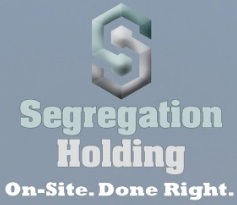As professional real estate investors, have you established a repair fund yet? Whether you invest in commercial real estate or residential rental properties, an emergency repair fund is vital to the successful management of your investment.
The best way to handle repair contingencies is to establish a repair fund. Each month a portion of your collected rent should be deposited into this fund…no exceptions. The rule of thumb should be 10%. If you own properties that are quite old or you are in an area with high repair costs you should increase that to at least 15%. Be warned, the problem with such a fund is that as the balance grows you will be tempted to use it for other things…don’t! If you are a seasoned investor you understand this. If you are a novice investor or fairly new in the industry, heed this warning. DO NOT touch this fund for any reason other than repairs. You will most assuredly regret it if you do otherwise. There is, however, an “easy” way to increase your repair fund contributions that I will briefly address later.
I talked to an experienced investor recently who owns a fair number of rental houses. He was in a tight bind due to major maintenance issues at several of his properties. He had never considered having a maintenance fund. He relied on a bank line of credit when he needed cash. For most of us, our credit lines were cancelled after the real estate collapse. Even though he has plenty of equity in his properties, he can no longer use them as a ready cash source. Unfortunately, he now relies on credit cards for emergencies. What a mistake! Credit cards carry the highest cost of money available. Money that should be going into a maintenance reserve is now going to pay the interest on his credit cards. His fear, and rightfully so, is that he is just one major repair away from financial catastrophe.
By the way, the “easy” way to increase your repair fund contributions is to accelerate your depreciation. Commercial real estate is depreciated over 39 years using a straight-line method. Residential rentals are depreciated over 27½ years using the same straight-line method. However, personal property, things like carpeting, cabinetry, specialty plumbing or electrical, and secondary lighting all qualify to depreciate over 5 years. Outside, things like the sidewalk, driveway, curbs, landscaping, and signage qualify to depreciate over 15 years. This method of depreciation is called Modified Accelerated Cost Recovery System, or MACRS.
Using the MACRS method accelerates depreciation on as much as 25% or more of your investment. For residential rental property, 15% to 25% is common to accelerate to 5- and 15-year depreciation. There is a procedure called “cost segregation” that the IRS says is required in order to accurately identify qualifying assets. Actually, the IRS states there is an underlying assumption that the study is performed by “qualified” individuals or firms, such as those employing “…personnel competent in design, construction, auditing, and estimating procedures relating to building construction” (PLR 7941002). Let’s look at an example: you bought 10 rental houses about 5 years ago with a total investment of $500,000. We perform cost segregation and identify 20% qualifying property. You now have an additional $100,000 in accelerated depreciation. If you are in a 30% income tax bracket you now have about $30,000 in tax credits or tax refund to apply to your repair fund. Would that make a difference?
It is an absolute certainty, if you own property there will be a needed repair sooner or later. Paint peels, plumbing problems, electrical shorts out, roofs leak, and so many more. These are small in comparison to the HVAC going out or major sewer problems. Don’t get caught with you pants down! Start your repair fund today! Every day delayed is a day closer to potentially losing a property because you had to sell it to raise the cash you need.
Contact us today if you have any questions on how to best get started.
[email protected]
Segregation Holding
Twitter
972-897-8019 for immediate help


